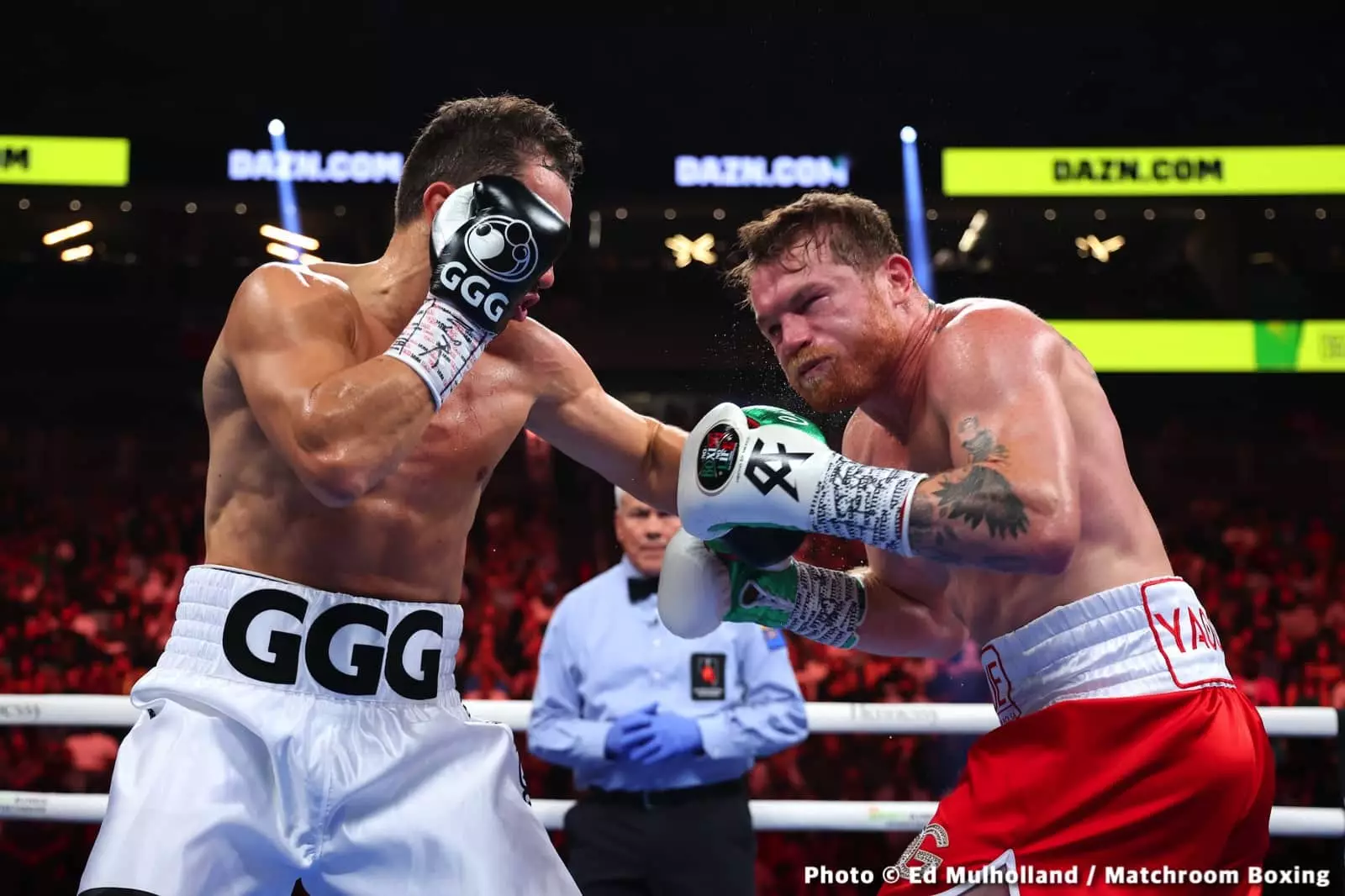Boxing often rewards fighters with exceptional skill, agility, and tactical intelligence, but when it comes to overpowering a technically dominant opponent like Canelo Alvarez, raw strength and power are non-negotiable. While Terence Crawford’s reputation is built on an impressive blend of technical mastery and adaptability, pundits and trainers are questioning whether he has the necessary physical tools to stand toe-to-toe with a puncher of Canelo’s caliber. The boldness of Crawford’s approach and his willingness to engage directly in the ring reveal more about strategic bravado than real physical preparedness. Canelo’s devastating knockout record and ability to absorb punishment with resilience raise the question: Can skill alone carry Crawford through a fight where power may be the ultimate equalizer?
The Power Gap: Is Crawford Enough of a Powerhouse?
The critical flaw in shaping a successful counterstrategy against someone like Canelo revolves around power disparity. Gennadiy Golovkin, a fighter who famously stood his ground and maintained pressure on Canelo by leveraging his physical dominance, serves as a benchmark here. Golovkin’s strength and punching power often overwhelmed Canelo, forcing him to adjust his style. However, Abel Sanchez’s critique emphasizes that Crawford isn’t cut from the same cloth. He does not possess Golovkin’s brute force nor his natural capacity to neutralize opponents by sheer physical intimidation. Crawford’s comparatively modest punching power at 147 pounds, and lack of sustained weight and strength at higher divisions, make it unlikely that he can replicate Golovkin’s approach.
What makes this even more problematic is Crawford’s recent performance at 154 pounds, where he struggled to land power shots with any consistency against a technically inferior opponent like Israil Madrimov. Suggesting that sparring or volume will be enough to surprise Canelo — especially with Crawford moving up two divisions — is optimistic at best. The reality is, significant physical development and a dedicated strength program are prerequisites that Crawford has not yet fully embraced. Without that, the idea of him overpowering Canelo establishes an unrealistic expectation based solely on skill, ignoring the vital importance of physicality in a super middleweight or middleweight fight.
The Risks of Underdevelopment and Hasty Preparation
The transition from 147 pounds to 168 pounds is not linear; it isn’t as simple as packing on weight. It involves retooling one’s entire physical structure—muscle mass, bone density, resilience—to survive and excel against larger, more powerful fighters. Crawford’s decision to bypass tune-up fights at 168, opting instead for a high-stakes clash against Canelo, epitomizes a dangerous gamble. It’s akin to jumping into deep water before learning how to swim properly. This rush to secure a marquee fight ignores the fundamental principle that strength and endurance are cultivated over time through disciplined training and strategic weight gain.
Furthermore, a fighter’s ability to generate power at a higher weight class isn’t just a matter of adding mass but also about how well that mass is integrated into one’s biomechanics. Golovkin’s powerful jab and relentless pressure weren’t just accidental — they resulted from years of dedicated strength training that optimized his punching efficiency. Crawford’s recent performances suggest that he still relies more on volume and speed than knockout power, which limits his ability to control the fight through intimidation or force.
The Strategic Overreach and Its Consequences
Crawford’s decision to take this fight without adequate preparation highlights a broader issue of overconfidence and undervaluing the opponent’s strengths. In boxing, bravery and skill are vital, but they must be complemented by physical readiness. To expect Crawford to emulate Golovkin’s blueprint — standing firm and exchanging power shots — requires a level of natural strength that Crawford simply hasn’t demonstrated. His previous fights at 154 pounds show a fighter who relies on technical skill rather than raw knockout power.
This miscalculation in strategy raises alarm bells. If Crawford fights recklessly, engaging directly in exchanges, it inadvertently plays into Canelo’s hands. Canelo’s style—focused on punishing opponents with counter punches, body shots, and power hooks—thrives when opponents become predictable or overly aggressive. A fighter lacking the physical capacity to impose his will risks being reined in by Canelo’s tactical intelligence. Such a scenario would inevitably lead to Canelo gaining control and landing the crucial shots necessary to sway the outcome.
Ultimately, boxing is a multifaceted sport that demands more than just passion and technique. Power, strength development, and physical conditioning shape the outcome of fights as much as skills and strategy. Crawford’s ambitious leap into higher divisions and into a high-profile fight with Canelo might be a testament to his confidence, but it also exposes vulnerabilities rooted in a lack of comprehensive physical preparedness. Without addressing this critical gap, any talk of Crawford pulling off a Golovkin-like performance remains an optimistic, if not naive, fantasy.


Leave a Reply